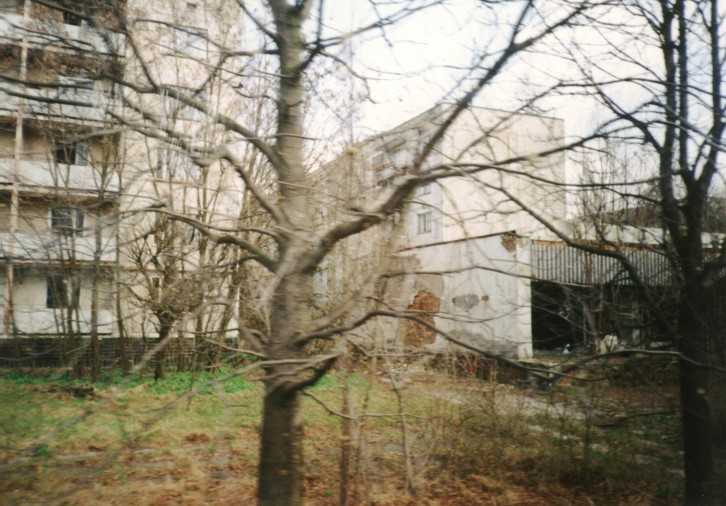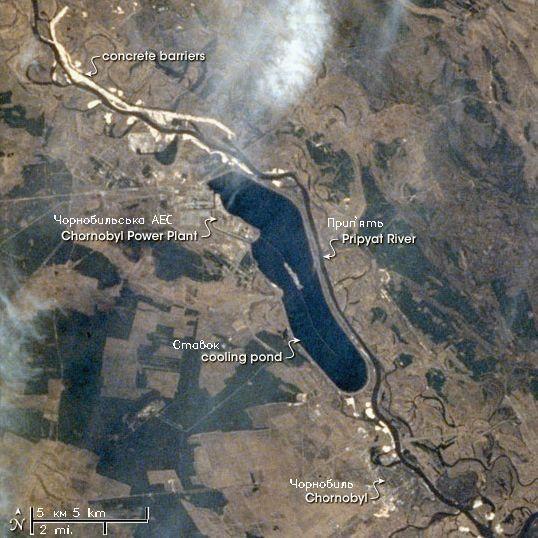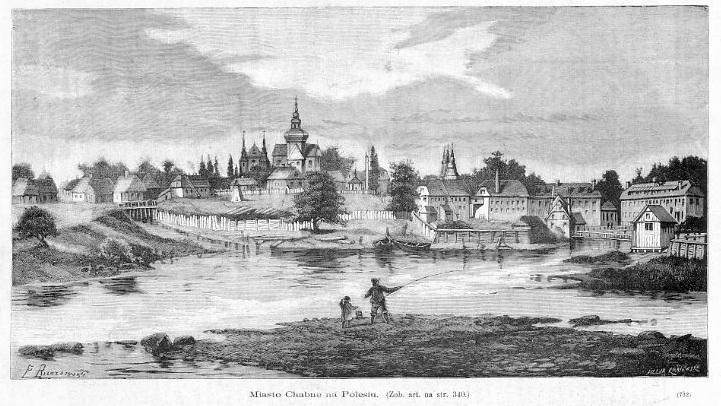|
List Of Chernobyl-related Articles
This is a list of Chernobyl-related articles. Disaster and effects * Comparison of Chernobyl and other radioactivity releases ** Comparison of the Chernobyl and Fukushima nuclear accidents * Chernobyl disaster * Effects of the Chernobyl disaster * Chernobyl necklace * Convention on Early Notification of a Nuclear Accident, adopted in direct response to Chernobyl * Cultural impact of the Chernobyl nuclear disaster * Deaths due to the Chernobyl disaster * Individual involvement in the Chernobyl disaster * Radiophobia * Threat of the Dnieper reservoirs Russo-Ukrainian War * Battle of Chernobyl Places and geography Power plant * Chernobyl Nuclear Power Plant * Chernobyl Nuclear Power Plant sarcophagus * Chernobyl New Safe Confinement Exclusion zone * Chernobyl Nuclear Power Plant Exclusion Zone, also known as the Zone of Alienation * Pripyat, abandoned city * Chernobyl, semi-abandoned city * Kopachi, abandoned village * Poliske, abandoned town * Red Forest Other * Slavutych, ... [...More Info...] [...Related Items...] OR: [Wikipedia] [Google] [Baidu] |
Chernobyl Nuclear Power Plant Sarcophagus
, image = Chernobylreactor 1.jpg , caption = The sarcophagus in 2006. The tall chimney is an original part of the reactor building. , location = Covering Reactor 4 of the Chernobyl Nuclear Power Plant, within the Chernobyl Exclusion Zone, near Pripyat , location_town = , location_country = Ukraine , coordinates = , start_date = June 1986 , completion_date = November 1986 , demolition_date = TBC 2020 , status = Deteriorated; succeeded by Chernobyl New Safe Confinement , cost = , references = , map_type = Ukraine , map_caption = Location in Ukraine , building_type = Confinement shelter , height = , alternate_name = Chernobyl Nuclear Power Plant Shelter Structure The Chernobyl Nuclear Power Plant sarcophagus or Shelter Structure ( uk, Об'єкт "Укриття") is a massive steel and concrete structure covering the nuclear reactor number 4 building of the Ch ... [...More Info...] [...Related Items...] OR: [Wikipedia] [Google] [Baidu] |
Chornobyl
Chernobyl ( , ; russian: Чернобыль, ) or Chornobyl ( uk, Чорнобиль, ) is a ghost town, partially abandoned city in the Chernobyl Exclusion Zone, situated in the Vyshhorod Raion of northern Kyiv Oblast, Ukraine. Chernobyl is about north of Kyiv, and southwest of the Belarusian city of Gomel. Before its evacuation, the city had about 14,000 residents, while around 1,000 people live in the city today. First mentioned as a ducal hunting lodge in 1193, the city has changed hands multiple times over the course of history. Jews moved into the city in the 16th century, and a now-defunct monastery was established in the area in 1626. By the end of the 18th century, Chernobyl was a major centre of Hasidic Judaism under the Twersky Dynasty, who left Chernobyl after the city was subject to pogroms in the early 20th century. The Jewish community was later murdered during the Holocaust. Chernobyl was chosen as the site of Chernobyl Nuclear Power Plant, Ukraine's fir ... [...More Info...] [...Related Items...] OR: [Wikipedia] [Google] [Baidu] |
Chernobyl Heart
''Chernobyl Heart'' is a 2003 documentary film by Maryann DeLeo. The film won the Best Documentary Short Subject award at The 76th Academy Awards. In the film, DeLeo travels through Ukraine and Belarus with Adi Roche, the Irish founder of the Chernobyl Children's Project International, observing the effects of the Chernobyl nuclear disaster on the health of children in the area. Many children developed a previously unknown cardiac degradation condition known in the area as "Chernobyl heart", in addition to other severe radiation poisoning effects DeLeo explored the Chernobyl disaster again in 2008 with the film ''White Horse''. Broadcast and release details *''Chernobyl Heart'' was shown to the United Nations General Assembly on 28 April 2004. *The film was broadcast in the United States by HBO on 9 September 2004. *It was shown in Australia on 26 April 2005 as part of the Australian Broadcasting Corporation's ''Foreign Correspondent'' program. [...More Info...] [...Related Items...] OR: [Wikipedia] [Google] [Baidu] |
Consequences Of The Catastrophe For People And The Environment
Consequence may refer to: * Logical consequence, also known as a ''consequence relation'', or ''entailment'' * In operant conditioning, a result of some behavior * Consequentialism, a theory in philosophy in which the morality of an act is determined by its effects * Unintended consequences * In logic, a consequent is the second half of a hypothetical proposition or consequences * Consequent (music), the second half of a period (music) Games * Consequences (game), a parlour game Fiction * ''Consequences'' (novel), a 1919 novel by E. M. Delafield * "Consequences" (Kipling story), an 1888 short story by Rudyard Kipling * "Consequences" (Cather story), a 1915 short story by Willa Cather Film and TV * ''Die Konsequenz'' (English: ''The Consequence''), a 1977 West German film * ''Anjaam'' (English: ''Consequence''), a 1994 Hindi film * '' Anjaam (1940 film)'', an earlier Hindi film of the same name * Consequence (film), a 2003 action thriller film starring Armand Assante * ''Con ... [...More Info...] [...Related Items...] OR: [Wikipedia] [Google] [Baidu] |
The Bell Of Chernobyl
''The Bell of Chernobyl'' is a 1987 documentary film directed by Ukrainian filmmaker, Rollan Serhienko. The film was made following the Chernobyl nuclear disaster and includes a variety of accounts of the incident and its implications for nearby communities. The film's synopsis describes it as presenting "an indictment against the irresponsible application of nuclear technology, armament and the Cold War." The film is presented in Russian language with English subtitles and is 89 minutes long. It was screened at IDFA in the Netherlands in 1988. The ''New York Times ''The New York Times'' (''the Times'', ''NYT'', or the Gray Lady) is a daily newspaper based in New York City with a worldwide readership reported in 2020 to comprise a declining 840,000 paid print subscribers, and a growing 6 million paid d ...'' indicates that an 84-minute version of the film exists. The film is also known by the alternative titles ''The Poison of Chernobyl'' and ''Le Tocsin de Tchernobyl''. ... [...More Info...] [...Related Items...] OR: [Wikipedia] [Google] [Baidu] |
Elephant's Foot (Chernobyl)
The Elephant's Foot is the nickname given to a large mass of corium and other materials formed underneath the Chernobyl Nuclear Power Plant, near Pripyat, Ukraine, during the Chernobyl disaster of April 1986, notable for its extreme radioactivity. Discovered in December of that year, it is located in a maintenance corridor near the remains of Reactor No. 4. It is still an extremely radioactive object, though the danger has decreased over time due to the decay of its radioactive components. Origin The Elephant's Foot is a mass of black corium with many layers, externally resembling tree bark and glass. It was formed during the Chernobyl disaster in April 1986 and discovered in December 1986. It is named for its wrinkly appearance, suggestive of the foot of an elephant. It is one small part of a much larger mass that lies beneath Reactor No. 4 of the Chernobyl Nuclear Power Plant. The Elephant's Foot is located in Room 217/2, to the southeast of the ruined reactor and above gr ... [...More Info...] [...Related Items...] OR: [Wikipedia] [Google] [Baidu] |
Slavutych
Slavutych ( uk, Славу́тич) is a city and municipality in northern Ukraine, purpose-built for the evacuated personnel of the Chernobyl Nuclear Power Plant after the 1986 disaster that occurred near the city of Pripyat. Geographically located within Chernihiv Raion, Chernihiv Oblast, Slavutych is administratively subordinated to the Kyiv Oblast and is part of Vyshhorod Raion. It hosts the administration of Slavutych urban hromada, one of the hromadas of Ukraine. In 2021 the city had a population of . Geography Slawutytsch (Ukraine).png, Transportation connection between Slavutych and Pripyat (map is in German) Ripchanskyi-Raion.png, Ripky Raion within Chernihiv Oblast. The non-shaded white dot at the southern edge indicates the city of Slavutych. Slavutych is situated on the left bank of the Dnieper River, 40 kilometers (25 miles) from Chernihiv, 45 kilometers (30 miles) from the city of Pripyat, 50 kilometers (30 miles) from Chernobyl (both in Ivankiv Raion) and 200 ... [...More Info...] [...Related Items...] OR: [Wikipedia] [Google] [Baidu] |
Red Forest
The Red Forest ( uk, Рудий ліс, , ) is the area surrounding the Chernobyl Nuclear Power Plant within the Exclusion Zone, located in Polesia. The name "Red Forest" comes from the ginger-brown colour of the pine trees after they died following the absorption of high levels of ionizing radiation as a consequence of the Chernobyl nuclear disaster on 26 April 1986. In the post-disaster cleanup operations, the Red Forest was bulldozed and buried in "waste graveyards"; the site remains one of the most contaminated areas in the world today. Disaster and cleanup The Red Forest is located in the zone of alienation; this area received the highest doses of radiation from the Chernobyl accident and the resulting clouds of smoke and dust, heavily polluted with radioactive contamination. The trees died from this radiation. The explosion and fire at the Chernobyl No. 4 reactor contaminated the soil, water and atmosphere with radioactive material equivalent to that of 20 times the atomi ... [...More Info...] [...Related Items...] OR: [Wikipedia] [Google] [Baidu] |
Poliske
Poliske ( uk, Поліське) or Polesskoye (russian: Полесское) is an abandoned settlement and former urban-type settlement in the Chernobyl Exclusion Zone, part of Kyiv Oblast, Ukraine. It is located on the Uzh River and was an administrative center of Poliske Raion (district). However, later the town was taken out of a registry as it was completely depopulated being located in the Zone of alienation. Currently around 20 people live there, so called ''samosely'' ("self-settlers"). History Overview Originally called Khabnoye or Khabne (russian: Хабное, uk, Хабне), it was renamed Kaganovichi Pervye or Kahanovychi Pershi (russian: Кагановичи Первые, uk, Кагановичі Перші) in 1934, and Poliske in 1957. Founded in the 15th century, it was the home of the Polish family Horwatt from 1850 to 1918. In the 19th century, this small city was known for its weavers and its textile industry. In 1890, 80% of the population was Jewish. I ... [...More Info...] [...Related Items...] OR: [Wikipedia] [Google] [Baidu] |
Kopachi
Kopachi ( uk, Копачі, russian: Копачи) was a village near Chernobyl, Ukraine, just south-west of the Pripyat River Basin. After the Chernobyl disaster in 1986 the village was contaminated by fallout and subsequently evacuated and is now within the Chernobyl Exclusion Zone; and thus has been abandoned since 1986. History After Kopachi village was evacuated by the authorities, all the houses were torn down and buried, as an experiment. This village was not the only village suffering this fate as a result of the Chernobyl disaster. The only traces left of the village today is a series of mounds and a small number of surviving trees which are not part of the local native flora. Each mound contains the remains of one house and is topped by a sign with the international radiation symbol. The Chernobyl disaster highly contaminated Kopachi with high-level radioactive fallout. A kindergarten and one other brick building are the only architectural structures that remain stand ... [...More Info...] [...Related Items...] OR: [Wikipedia] [Google] [Baidu] |
Chernobyl
Chernobyl ( , ; russian: Чернобыль, ) or Chornobyl ( uk, Чорнобиль, ) is a partially abandoned city in the Chernobyl Exclusion Zone, situated in the Vyshhorod Raion of northern Kyiv Oblast, Ukraine. Chernobyl is about north of Kyiv, and southwest of the Belarusian city of Gomel. Before its evacuation, the city had about 14,000 residents, while around 1,000 people live in the city today. First mentioned as a ducal hunting lodge in 1193, the city has changed hands multiple times over the course of history. Jews moved into the city in the 16th century, and a now-defunct monastery was established in the area in 1626. By the end of the 18th century, Chernobyl was a major centre of Hasidic Judaism under the Twersky Dynasty, who left Chernobyl after the city was subject to pogroms in the early 20th century. The Jewish community was later murdered during the Holocaust. Chernobyl was chosen as the site of Ukraine's first nuclear power plant in 1972, locat ... [...More Info...] [...Related Items...] OR: [Wikipedia] [Google] [Baidu] |

.jpg)


.jpg)